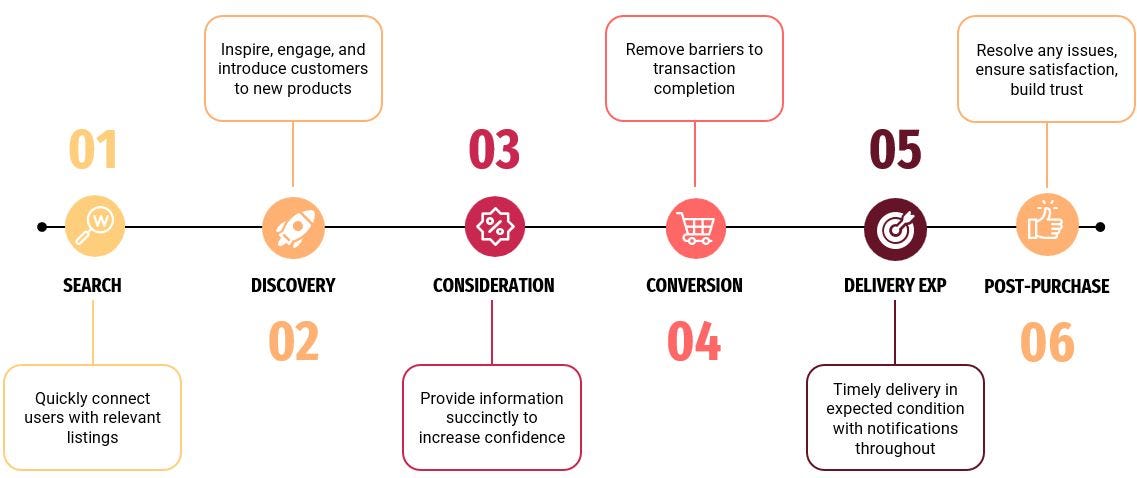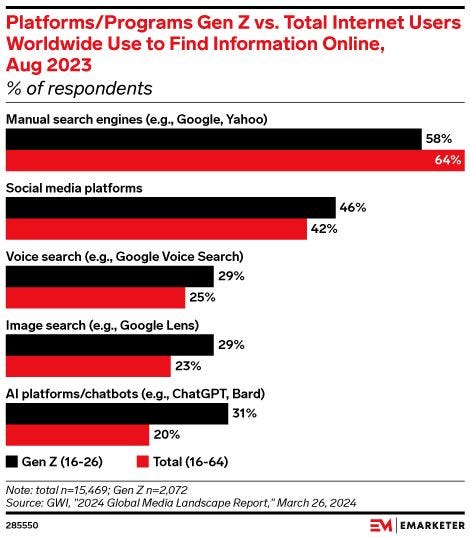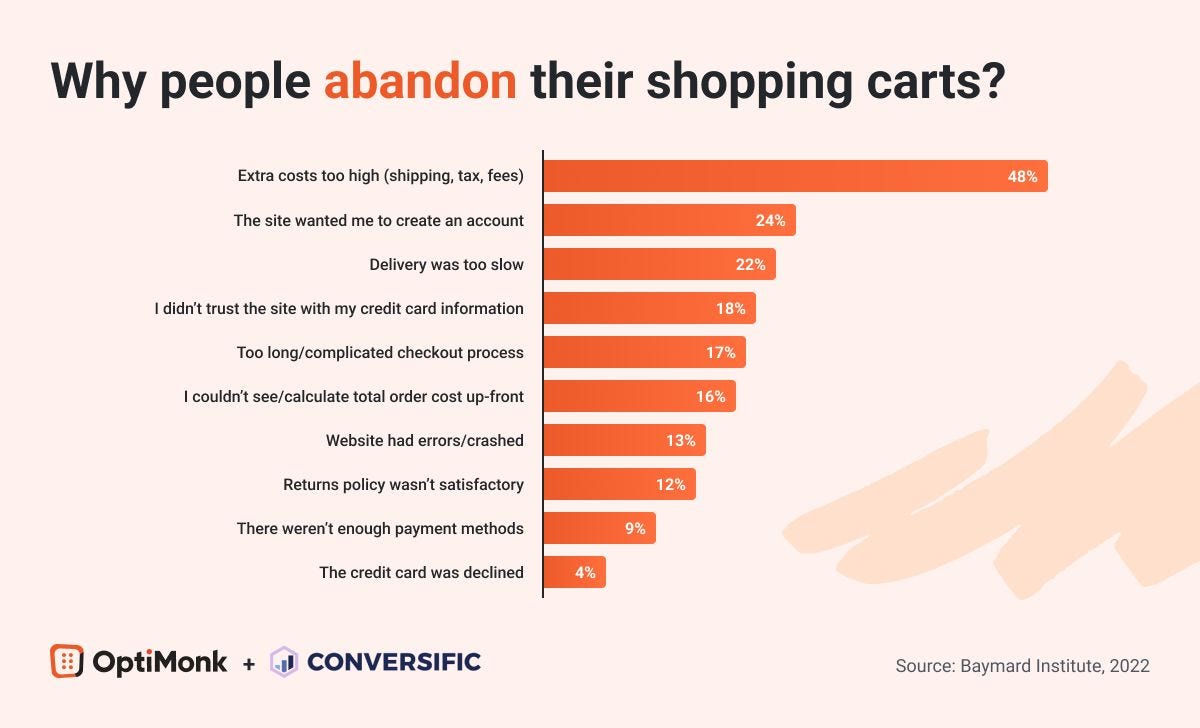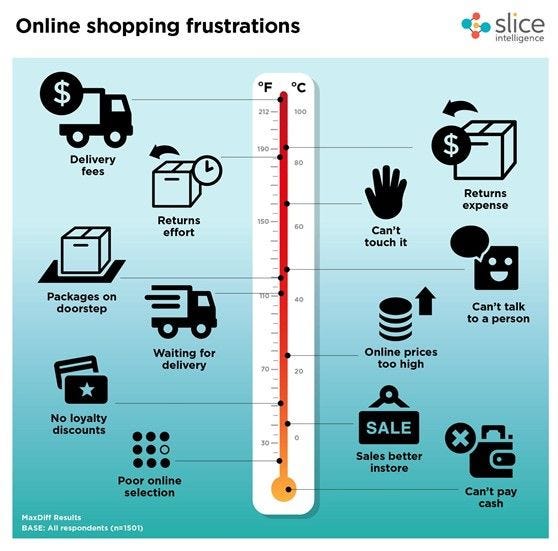Introduction
Digital marketplaces have revolutionized the way consumers shop and businesses operate. However, success in this competitive space requires a deep understanding of the customer journey. This article examines the customer journey in six critical segments: Search, Discovery, Consideration, Conversion, Delivery Experience, and Post-Purchase Support. Each segment is accompanied by common customer problems, research, and ideation tips for product managers to solve similar problems in their business and examples of market leading products for inspiration.

Customer Journey Map
I. Search
Definition: Search is the initiation of the customer journey where users actively look for specific products or services. This could involve using search engines, in-platform search bars, or filtering options. Key goal should be to quickly connect users with relevant listings, products, or services that match their intent and interests.

Common customer problems: The challenge users often encounter are related to relevance and specificity. Many customers encounter irrelevant or low-quality search results due to ineffective algorithms. In addition, an overwhelming number of results can confuse users, making it difficult to find what they need. Getting Search is very critical as this is the first step of the customer journey with users typically abandoning searches that do not yield satisfactory results within a few seconds (Nielsen Norman Group 2020 study). To identify search-related issues:
- Analyzing Search Data: Use analytics tools to track search queries, click-through rates, and conversion rates. Identify keywords that lead to low engagement.
- User Feedback: Conduct surveys or focus groups to gather insights on users' search experiences and areas for improvement.
Optimization focus: Success here increases the chance users will stay engaged and move deeper into the platform. To improve the search experience:
- Enhance Search Algorithms: Invest in machine learning models that consider keywords, product attributes, and refine search results based on user behavior. It is also important to find the right balance between speed and relevance to avoid high latency. Amazon is a great example that employs advanced algorithms and machine learning techniques to refine search results based on user behavior, preferences, and historical data. eBay is another good example that uses a combination of keyword optimization and user data analysis to improve search accuracy. eBay's "Best Match" algorithm prioritizes relevant listings based on various factors, including customer preferences and item popularity.
- Implement Advanced Filters: Allow users to filter results based on various criteria (e.g., price, category, ratings) to reduce overwhelm and improve usability.
- Build for multi-modal search: Conversational Search and Visual Search are increasingly important mediums to incorporate in the experience as these mediums are generally able to drive higher user engagement. With advances in large language models, Amazon has recently launched Rufus, a conversational search experience to help with customer search. A good example of visual search would be Etsy that allows users to upload images to find similar products by leveraging computer vision technology.
II. Discovery
Definition: In this stage, customers explore the platform to see what is available, beyond what they may have initially searched for. An effective experience should be able to inspire, engage, and introduce customers to items or categories they may not have thought of and broaden their options.
Common customer problems: In open exploration of new products and services, customers can easily feel overwhelmed if they are presented with too many choices that do not clearly align with their interests or past shopping behaviors. In addition, a cluttered interface with inadequate product categorization can hinder effective browsing and lead to customer frustration. When diving deep into effectiveness of discovery, look for prevalence of issues with:
- User Behavior Analytics: Utilize heatmaps and user flow analysis to understand how users navigate the marketplace. Identify bottlenecks and points of disengagement.
- User Interviews: Engage with customers to gather qualitative insights about their discovery experiences and pain points.
Optimization focus: To enhance the discovery experience:
- Develop Personalized Recommendations: Implement algorithms that analyze user behavior, purchase history, and preferences to suggest relevant products. Netflix is a great case study that excels in content discovery through personalized recommendations powered by sophisticated algorithms. By analyzing viewing habits and preferences, Netflix curates lists that resonate with individual users. Another good example is Etsy that employs a combination of user preferences, purchase history, and browsing behavior to personalize the shopping experience, showcasing items that align with individual tastes.
- Streamline Navigation: Simplify the marketplace layout by organizing products into intuitive categories. Use clear visual cues to guide users through their exploration. Pinterest does a good job at this by utilizing a visual discovery platform that allows users to browse and save products based on interests and effectively personalizing their product feeds through these inputs to discover relevant items.
- Embrace influencers: Discovery is as much about selection availability as much as allowing customers to get inspired by a trusted voice. Seamlessly integrating influencer generated content (videos, images, etc.) and facilitating one-click buys could be instrumental in driving user engagement and satisfaction. Rapid growth of TikTop Shop is a great example of customer's willingness to trust the voice of their influencers when making purchase decisions.
III. Consideration
Definition: Once a customer has shortlisted a few items, they weigh their choice by reading through the product detail pages, comparing similar items on relevant attributes (price, etc.) as well as reading other customer reviews. Ultimately, we should aim to provide all relevant information, such as reviews, pricing, specifications, or alternative options in a succinct manner so that customers feel informed and confident about making a choice.
Common customer problems: According to research by HubSpot (2021), 80% of customers report that product descriptions are crucial in their decision-making process. Specific to online fashion, fit anxiety is a top customer pain point across the industry, leading to lost sales or returns due to purchase of ill-fitting products as customers struggle to visualize how a product would look on them. Inadequate details can lead to hesitation and uncertainty about purchases. Difficulty in comparing similar products can impede decision-making. To uncover consideration-related issues:
- Customer Surveys: Collect feedback on the sufficiency of product information and any difficulties encountered during the decision-making process.
- Analytics on Product Detail Page Engagement: Monitor metrics such as time spent on product pages, interaction rates with different product details.
Optimization focus: To improve the consideration phase:
- Enhance Product Descriptions: Provide comprehensive, engaging product descriptions, supplemented with high-quality images and videos. This transparency helps customers make informed decisions. Zappos and Sephora are retailers that rate highly in this regard for providing detailed product descriptions, including ingredients, usage instructions, and customer reviews.
- Implement Comparison Features: Develop tools that allow customers to compare products side by side, highlighting key differences and similarities. For instance, Best Buy offers comparison tools that allow users to evaluate similar products side by side while prioritizing which attributes to surface, hence making the decision process more straightforward.
- Facilitate visualization: The ability for customer to visualize how a fashion (apparel, shoes) product would fit them or a home and lifestyle product (furniture, home improvement) would complete the look of the room are big barriers for online shopping and aspects that physical stores still have an advantage over online shopping. But advances in Augmented Reality/Virtual Reality and Computer Vision can help narrow the gap. Both Amazon and Wayfair are good examples that offer virtual reality experiences to allow customers to visualize products in their homes.
IV. Conversion
Definition: This is the step where users decide to make a purchase, leading to actions like adding items to their cart and completing checkout. Our goal should be to make the purchasing process as seamless and intuitive as possible, removing barriers to transaction completion.

Common customer problems: Conversion can be hampered by complicated checkout processes, unexpected costs, or lack of payment options. Research by Baymard Institute (2020) indicates that 69.7% of online shopping carts are abandoned, often due to these friction points. To identify conversion-related issues, investigate:
- Cart Abandonment Analytics: Analyze data to determine where users drop off in the checkout process, identifying specific stages that may cause frustration.
- Usability Testing: Conduct tests to observe users navigating the checkout process and identify friction points.
Optimization Focus: To enhance conversion rates:
- Simplify the Checkout Process: Streamline the checkout process by minimizing required fields and offering guest checkout options. Various retailers have invested heavily to enhance this experience. Amazon provides a one-click checkout option for returning customers. Apple Pay offers a seamless and secure checkout experience with a simple tap.
- Highlight Trust Signals: Provide a variety of secure payment methods to cater to different preferences. Clearly display security badges, customer testimonials, and return policies to build customer trust. Assure customers of data security and privacy. Etsy for instance prominently displays trust signals, such as buyer protection guarantees and secure payment options, which help alleviate concerns about online security.
V. Delivery Experience
Definition: After purchase, this is the experience users have with receiving their products, including order tracking, and receiving goods. The goal should be ensuring that users receive their items on time and in the expected condition, while keeping them informed throughout.
Common customer problems: Delivery issues can significantly impact customer satisfaction. Customers may feel anxious without clear delivery dates. Issues with the quality of delivered products can lead to dissatisfaction. According to a survey by Convey (2021), 84% of consumers expect timely deliveries, with 44% willing to pay more for better shipping options. To uncover delivery-related challenges:
- Delivery Tracking Feedback: Analyze customer feedback regarding their delivery experiences and any issues they encountered.
- Returns Data: Monitor return rates and the reasons for returns to identify patterns related to delivery issues.
Optimization Focus: To enhance the delivery experience:
- Provide Transparent Tracking: Implement a system that offers real-time updates on shipping status, including estimated delivery dates. Proactively communicate any delays. Amazon for instance provides robust delivery tracking with near real-time updates on shipping status and estimated arrival times.
- Quality Control Measures: Establish protocols to ensure that the correct items are shipped and that products are in excellent condition upon arrival. Zappos is known for its emphasis on quality assurance and drives success here by implementing rigorous checks to ensure that customers receive the correct and undamaged items.
- Flexibility of delivery: Provide customers the flexibility to receive the package securely at a time of their convenience. Shipping experts such as UPS and FedEx provide options for scheduled deliveries and signature requirements.
VI. Post-Purchase Support
Definition: This is the support provided after the product has been delivered, including customer service, returns, exchanges, and additional follow-up communication. Goal should be to resolve any issues, ensure customer satisfaction, and build loyalty by providing efficient, helpful support.

Common customer problems: Post-purchase support is often overlooked, yet it is critical for customer retention. Customers frequently struggle to find help after their purchase making it one of the leading causes of customer frustration. Absence of post-purchase communication, difficulty accessing support, slow response times, and inadequate return processes can result in disengagement. Research from Zendesk (2022) reveals that 61% of customers have switched to a competitor due to poor post-purchase service. To identify post-purchase challenges, evaluate:
- Support Ticket Analysis: Examine the types of issues customers report after their purchases to identify common themes.
- Satisfaction Surveys: Conduct surveys to gather feedback on the post-purchase experience and identify areas for improvement. Tools like Listen360, a customer feedback platform, can help businesses capture real-time insights, measure satisfaction, and quickly act on customer concerns to strengthen retention.
Optimization Focus: To improve post-purchase support:
- Offer Multiple Support Channels: Provide a range of support options (e.g., chat, email, phone) that are easily accessible to customers and ensure timely response times. Apple for instance offers exceptional post-purchase support through multiple channels, including live chat, phone support, and a comprehensive online help center. This accessibility enhances customer satisfaction.
- Flexibility for returns: Offer convenient return policies and hassle-free returns. Best in class here would be the likes of Zappos that offers 24/7 customer support and a generous return policy.
- Engage in Follow-Up Communication: Send post-purchase emails to thank customers, provide usage tips, and encourage feedback. Amazon for instance follows up with customers post-purchase, providing usage tips and asking for feedback on their experience, fostering ongoing engagement.
Conclusion
In the digital marketplace landscape, the customer journey is multifaceted, with each segment presenting unique challenges and opportunities. By understanding these segments --- Search, Discovery, Consideration, Conversion, Delivery Experience, and Post-Purchase Support --- product managers can effectively identify and address pain points to enhance the overall customer experience. Continuous feedback and iterative solutioning will allow marketplaces to enhance the overall customer experience, increase engagement and foster loyalty in an increasingly competitive landscape.
About the Author
Udit Mehrotra is a seasoned product and technology leader, currently spearheading Product Management for Customer Experience at Amazon Canada. Renowned for his expertise in customer-centric innovation, he leads teams developing AI and ML-driven solutions to enhance online shopping --- spanning search optimization, catalog enrichment, payment systems, and delivery experience. With a proven track record in scaling product teams, strategic leadership, and mentorship, Udit is a sought-after speaker on thriving in high-stakes, fast-paced tech environments. He holds an MBA from Carnegie Mellon University and a Bachelor's in Electrical and Electronic Engineering from Nanyang Technological University, Singapore.
Bibliography
-
Nielsen Norman Group (2020). 7 Ways to Analyze a Customer-Journey Map.
-
McKinsey & Company (2023). Reinventing the digital customer experience.
-
McKinsey & Company (2021). Enhancing customer experience in the digital age.
-
HubSpot (2020). 8 Strategies for Writing Product Descriptions That'll Generate Revenue.
-
Corefy (2024). 10 Proven tactics to increase checkout conversion rate and boost your sales.
-
Convey (2023). Changing Expectations: Customer Attitudes Towards Shipping Speeds.
-
Zendesk (2022). 7 ways to build customer loyalty (and why it's important).
-
Insights for Professionals (2020). 8 Tactics to Improve Your Post-Purchase Customer Experience.